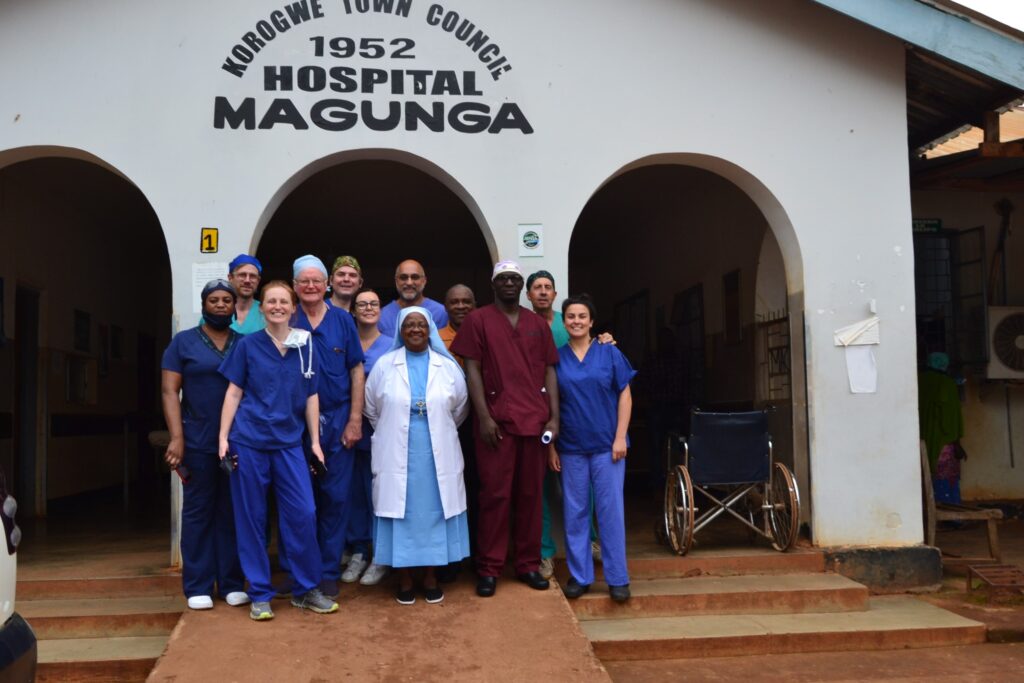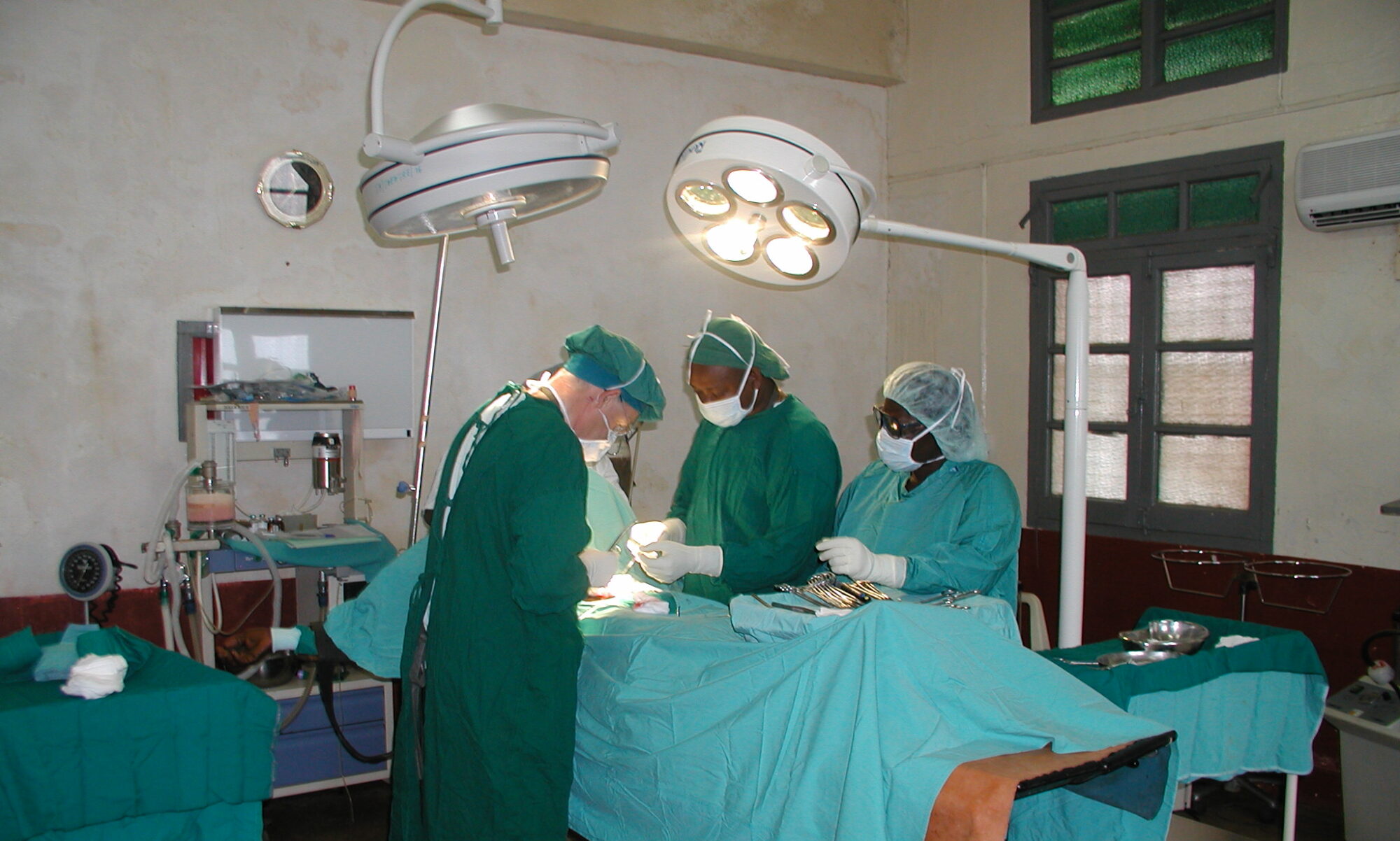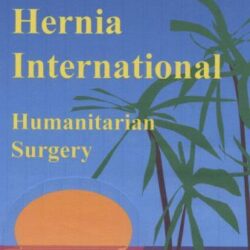HERNIA INTERNATIONAL MISSION TO KOROGWE, TANZANIA. JUNE 2023
THE TEAM
John Hobbiss. Surgeon
Fernando De Santiago Urquuijo. Surgeon
Steffen Rose. Surgeon
Kristof Nemeth. Surgeon
Jenny Hobbiss. Surgical Assistant
Ajaiya Mull. Anaesthetist
Claire Fenn. Operating Department Practitioner
Olivia Sibly. Nurse
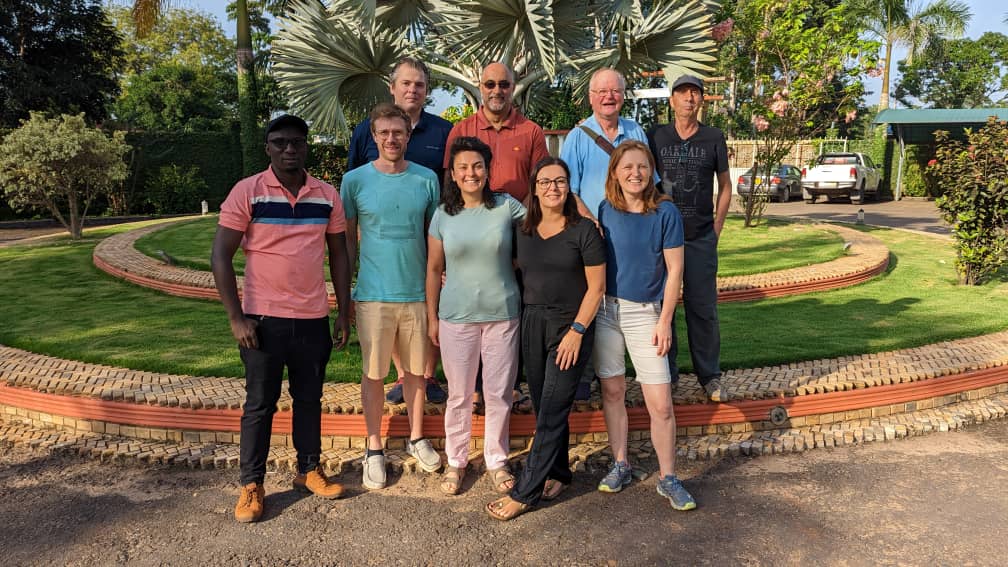
THE HOST
We were welcomed at Dar Es Salaam Airport on our arrival in Tanzania by Dr David Siwiti, who works with Sister Avelina at Korogwe District Hospital and who had done all the organising of our mission from the Tanzanian side. About two months previously, Dr Siwiti had requested lists of all the medical equipment and drugs that we were planning to bring, so that he could forewarn the Tanzanian customs about our visit. At that stage, the lists that we produced were inevitably provisional. These provisional lists, along with Dr Siwiti’s presence, were sufficient and all our bags were allowed through Customs without undue delay. After a night in an airport hotel, we set out on the six hour journey to Korogwe. The road is now tarmacked all the way to Korogwe. The minibus that Dr Siwiti had hired for us was air conditioned, the scenery was varied and full of interest and we had a pleasant stop for lunch half way there. Our journey was nothing like the ordeal that previous missions seemed to have experienced.
Korogwe is a market town on the road to Arusha and Kilimanjaro. It is described in Lonely Planet as a “scrappy” town, to be passed through rather than to stay in. We found it to be crowded and vibrant, busy with traders, market stalls and motor bikes. In the market there was a great variety of locally grown vegetables for sale as well as sacks full of dried fish, from Tanga and other coastal towns. Korogwe is situated in a picturesque region, surrounded by cultivated fields and overlooked by rolling hills. At the time of our visit, everything looked lush and green. Maize was the most abundant crop but we also saw oranges being harvested, fields of pineapples and rice was being cultivated in paddy fields within the town itself.
Korogwe District Hospital is the main provider of hospital services within the town, with general medical, surgical, paediatric and maternity wards and an Emergency Unit. The surgical services are provided by Sister Avelina, supported by Dr David Siwiti and others.
There have been regular Hernia International missions to Korogwe since 2014, the most recent being a Spanish mission in 2022.
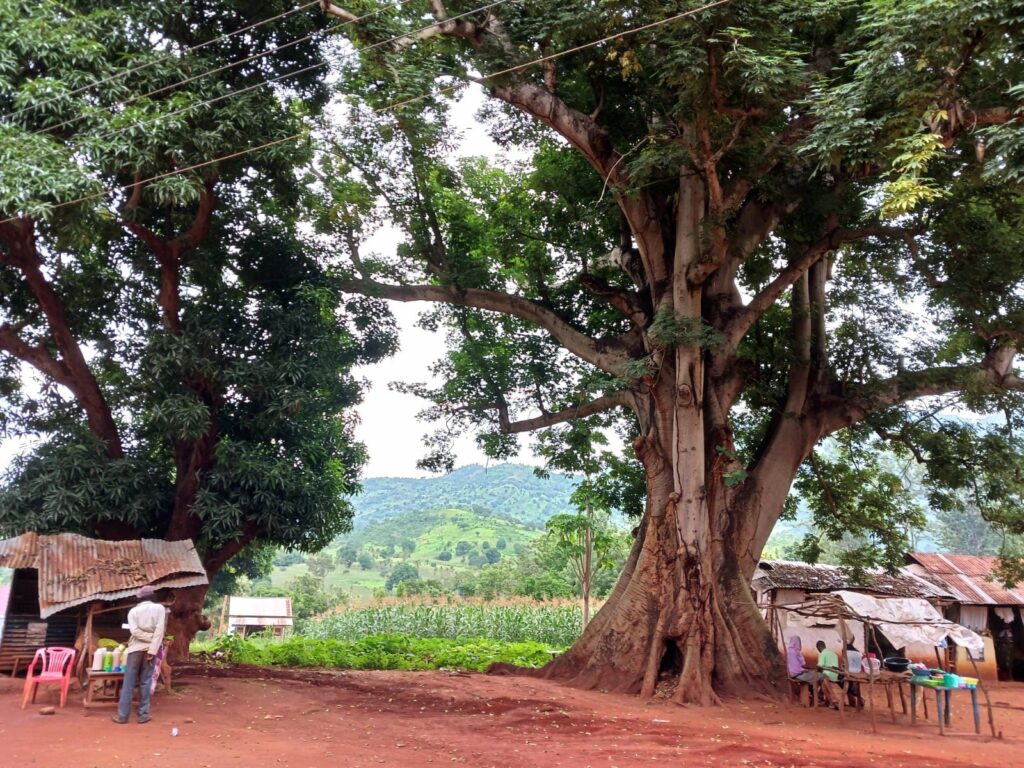
OUR WORK
We had made it clear prior to our arrival that we wished to restrict our work to hernia surgery. This was in contrast to the Spanish team that visited Korogwe last year, who undertook thyroid surgery in addition. We were greeted on the Sunday evening at Korogwe District Hospital by Sister Avelina. There was a queue of patients waiting to be seen. Whilst some of the party organised the equipment and drugs in the operating theatre, the rest of us assessed the patients, marking the surgical sites of those that we agreed to proceed with over the next few days.
We spent five days operating in the two theatres provided. These were roomy theatres with some air conditioning, functioning electrocautery and reasonable theatre lighting. There is a small third operating theatre that was used for caesarean sections whilst we were there. We were told that we could use this if needed but the two main theatres were adequate for us.
On most days, we were asked by Sister Avelina to see patients who had presented urgently to the hospital. A number of these required surgery and we were able to help Sister Avelina with these cases and to operate on them when appropriate.
We operated on 42 patients. There were 16 inguinal hernia patients, 4 of whom had bilateral hernias, making a total of 20 inguinal hernias repaired. Using The Kingsnorth Classification, nine were classified as Grade 1, seven Grade 2, one Grade 3 and three Grade 4. There were nine midline abdominal wall hernias, four umbilical hernias and three incisional hernias. The three incisional hernias were in women with lower midline incisions from previous Caesarean sections. We operated on six patients with hydroceles. One of these, a 63 year old man with a long history of a scrotal swelling, had a swollen irregular feeling testicle within the hydrocele. Dr Siwiti advised us that this was probably due to filariasis. He recommended orchidectomy, to which the patient readily consented.
In addition to the “hernia” cases, we undertook two laparotomies for ovarian cysts. One was a massive cyst, very symptomatic due to its size, in a 40 year old woman. It was full of thick mucus and presumed to be a mucinous cystadenoma. There were no macroscopic stigmata of malignancy and we hope that she has been cured. The other ovarian cyst was in a 22 year old lady, who presented acutely with pain and had an easily palpable, very tender abdominal mass. This was a large, tense cyst that was filled with chocolate fluid from a bleed. Again, there were no stigmata of malignancy.
Sister Avelina asked us to see a 16 year old girl with a discrete swelling the size of a large walnut in the right submandibular salivary gland. It had been present for at least a year. We thought that it was probably a pleomorphic adenoma. It was mobile on bimanual palpation and we decided that it was potentially curable if removed now, but perhaps not if it was left for several more months. The anaesthetic presented a problem as we had no facilities for general anaesthesia with intubation. Local anaesthetic was used with intermittent boluses of ketamine. A discreet tumour was removed intact. There will be no histological confirmation, but if it was a pleomorphic adenoma then we can expect a cure.
On our final morning we were asked to see an 80 year old man who had presented with intestinal obstruction. Clinical examination and a plain abdominal x ray confirmed the suspicion of a sigmoid volvulus. We were surprised to find that there was no rigid sigmoidoscope in the hospital with which to attempt deflation and that the usual management would be to proceed to laparotomy. This, with a certain degree of consternation, we agreed to do but only after speaking to the patient’s son about the potentially fatal outcome. We found a large, very tense sigmoid volvulus, which was resected. Intestinal continuity was restored with a primary anastomosis.
Although we were a five surgeon team with only two operating theatres, we were all kept busy for most of the time. If we weren’t operating, we were assisting and, if we weren’t assisting we were acting as scub nurse. It was, perhaps, no bad thing for us surgeons to acquire experience of working as the scrub nurse, even if it was, for some of us, at least, rather late in our careers.
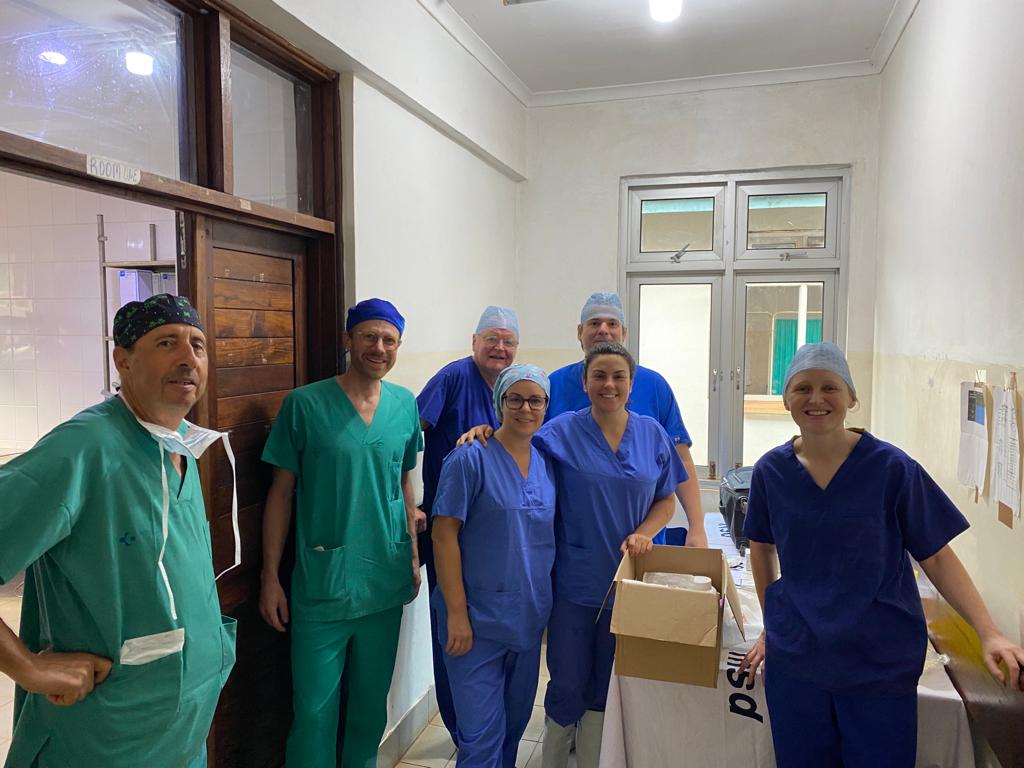
A special mention must be made of our anaesthetic team of Ajaiya and Claire. Ajaiya anaesthetised all the patients with the invaluable assistance of Claire. All our patients were given spinal anaesthetics apart from the girl with the submandibular tumour. The laparotomies required lengthy incisions and considerable intra-abdominal manipulation. Boluses of ketamine were given as required. Without the skills and positive attitude of our anaesthetic team, our surgical activities would have been considerably restricted. In addition to providing the anaesthetics for our patients, Ajaiya and Claire also gave spinal anaesthetics to four caesarean sections that were performed in the third operating theatre during the week of our stay.
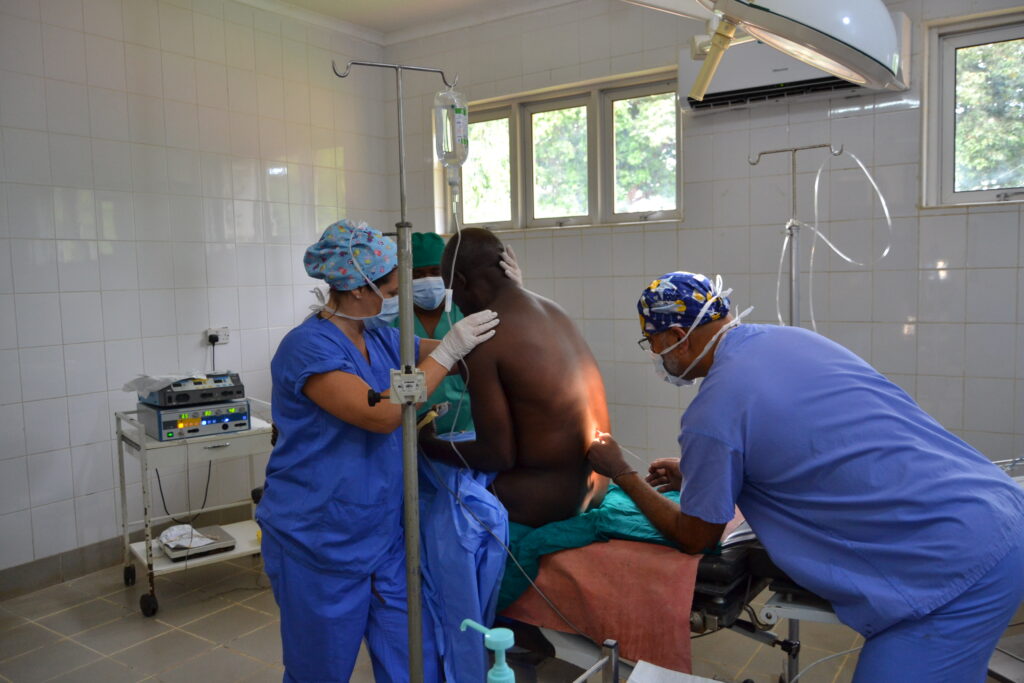
The role of the nurse in our team, Olivia, was to act as co-ordinator between the operating theatres and the wards. She ensured that each patient received their pre-op antibiotic and had the correct antibiotics and analgesics on discharge. .In hospital practice in the UK, medication for in patient use is provided by the hospital and the administration of it is strictly controlled by the ward nursing staff. In Korogwe, where the patient or their relatives have to buy and keep their own medication at the bedside, there is a different emphasis on the responsibility of drug provision. It was very helpful, therefore, to have a team member to organise the drugs that we had bought with us and make sure that each patient received the correct medication.
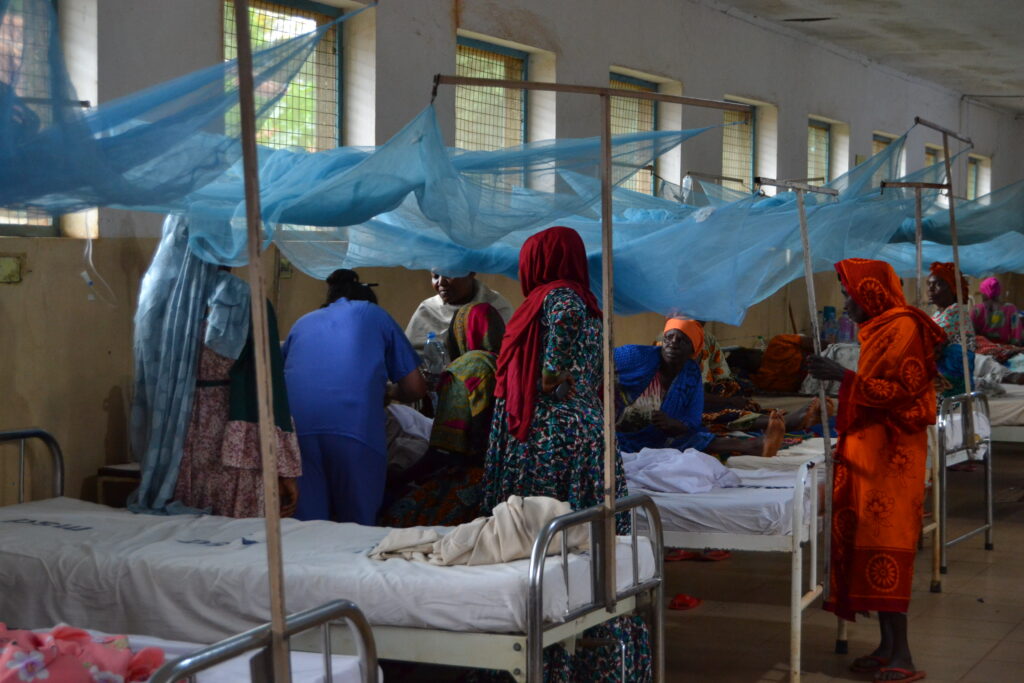
COMPLICATIONS
One 60 year old man who had surgery for a hydrocele developed acute urinary retention overnight. Dr Siwiti was unable to pass a catheter and had relieved his symptoms by suprapubic aspiration. We had a stiffer, non-retaining catheter in our equipment. This we were able to pass and with the dilatation that this provided, it was then possible to pass one of our Foley catheters. If he requires a prostatectomy, it will be done as a trans-vesical procedure by Sister Avelina in the hospital close to her convent.
Another patient, who had an irreducible direct hernia containing bladder had required a repair of her bladder. She was sent home with an indwelling catheter with instructions to return for removal in ten days’ time.
Otherwise we were not aware of any complications. We were pleased to see a symmetrical smile on the face of the girl who had the submandibular tumour excised. We had a message from Sister Avelina a few days after we had left that all patients were doing well. This was accompanied a day or two later by a photograph of the man who had the sigmoid colectomy, sitting at the side of his bed, looking well and drinking from a cup, with Sister Avelina standing at his side.
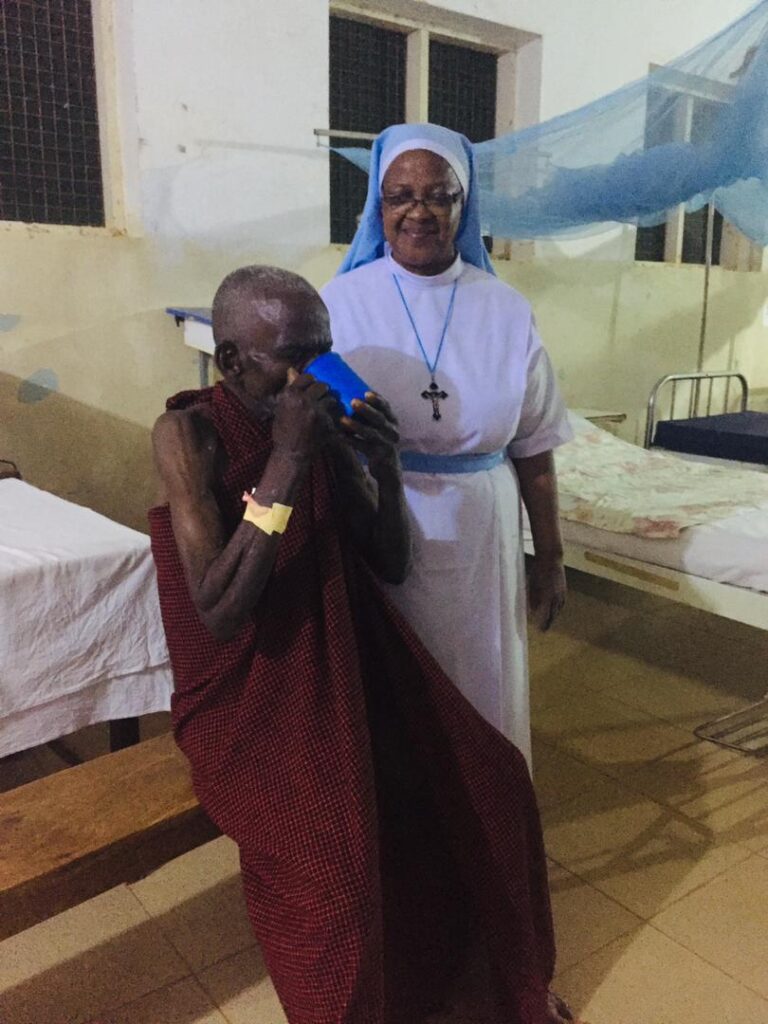
EQUIPMENT
Each operating theatre had a diathermy machine which worked well. The operating lights were satisfactory. We used a sterile glove tied around the light handle to allow manipulation by the surgeon. The electricity supply was fairly consistent but there were times when we had short-lived black outs and, on those occasions, it was very useful to have a headlight as an independent light source.
The quality of the surgical instruments provided by the hospital was generally poor. The scissors were blunt and very often an inappropriate size. Many of the needle holders functioned badly and failed to grip the needles adequately. We had some of our own instruments brought by Fernando and Steffen. These were used for the more challenging cases and proved very useful. The ladies working in the sterilising department, next to the operating theatres, helped to keep these instruments together as a separate set and not mix them with the hospital instruments. Identification marks on these instruments would have helped with this. We had brought some disposable operating gowns with us and some disposable drapes, but not in sufficient quantity for all our cases. We, therefore, had to use those provided by the hospital for some cases later in the week. These were satisfactory.
We had brought some disposable operating gowns with us and some disposable drapes, but not in sufficient quantity for all our cases. We, therefore, had to use those provided by the hospital for some cases later in the week. These were satisfactory. Future missions need not feel that they need to provide enough gowns and drapes for all their cases although some sterile drape packs would be useful for selected cases.
ACCOMODATION AND SUBSISTENCE
Dr Siwiti arranged accommodation for us at the Korogwe Executive Lodge, a fairly new hotel about ten minutes by car from the hospital. The rooms were clean and comfortable, the food (breakfast and dinner) was good and the cost was reasonable. We had dinner there every night apart from on our last day, when Sister Avelina invited us to visit the Convent, where she has lived for more than thirty years. We were shown the hospital close to the convent where she works in addition to Korogwe District Hospital. We were very kindly provided with dinner at the convent.
EXPENSES
We were confronted with two expenses on this mission, which we had not anticipated. Firstly, we were asked to pay for our Temporary Registration Certificates from the Tanzanian Medical Council and, secondly, we were asked to pay for food (breakfast and lunch) for those members of the hospital staff involved with our mission.
We had been informed by Dr Siwiti about the need to pay for our temporary registration applications several weeks before we travelled. The costs were $200 for each doctor’s registration and $100 for each nurse. Dr Siwiti informed us that the Medical Council of Tanzania had changed their policy and now insisted that all doctors who came to work in Tanzania, should have formal temporary Registration, for which they would be charged the standard rate. This was irrespective of whether they were being paid for their work or whether they were working free of charge for a charity. It was also irrespective of how long they would be working in Tanzania, and applied even if it was only for five days. Previous missions have not paid a fee for temporary registrations and, as far as I know, nor has the hospital. I think that, in the past, the Tanzanian Medical Council did not ask for payment from volunteer doctors working for a short period of time.
Andrew Kingsnorth agreed that Hernia International would pay the registration fees on this occasion. The money was sent to the Tanzanian Medical Council, along with the application forms, by Korogwe District Hospital and we took $1400 in cash, which we handed over to Dr Siwiti on our arrival.
The other unexpected expense was money for breakfast and lunch to be supplied by the hospital for the eight members of the mission and the hospital staff associated with the mission. Dr Siwiti had posted a WhatsApp message to the group two days before our departure, telling us that a meeting had been held and it had been decided that food would be provided for both us and the other hospital staff. The total cost would be $1600 and, please, would we agree to pay for it? We said that $1600 seemed a lot for hospital food for five days. Dr Siwiti said that they had worked out that there would be forty people to feed, eight of us plus thirty-two members of the hospital staff, including nurses, doctors and sterilizing unit staff.
We agreed that we would pay for this food on the first day and then decide whether to continue after that. The food that was provided for us on that first day was much more than we wanted and we told Dr Siwiti that we only wanted a snack at lunchtime. However, the food provided for the hospital staff was clearly much enjoyed by them and it continued to be supplied for the whole week. On the final day Dr Siwiti asked us whether we would pay $800, half the original sum, for the food. This we did, each contributing $100.
We were happy to provide some sort of reward for the staff who were having to do extra work on account of our mission, in particular the staff on the wards and the staff in the sterilising unit. We were, however, surprised to be confronted with this request for a significant extra payment immediately before the start of our mission.
When the Spanish Mission, led by Cesar Ramirez visited Korogwe last year, they elected to work late into the evenings. As a way of compensating the hospital staff, who were required to stay late on account of this, the Mission made a contribution of $1000 to the hospital. It may be that this gesture has set a precedent and that in the future, missions to Korogwe will be expected to make a contribution for the additional workload that is created. This is something that should be discussed and agreed with the hospital before the start of a mission.
CONCLUSION AND ACKNOWLEDGEMENTS
As we sat on the quayside looking out over the bay after our journey back to Dar es Salaam, we were able to reflect on what had been a very fulfilling time for each of us. We had left Korogwe and the hospital with a feeling of affection for the place and its people. We were inspired by the work that Sister Avelina has done, and continues to do there and we have great admiration for all who work in Korogwe District Hospital, often under very difficult circumstances.
Many thanks to Dr David Siwiti for all the time spent organising our mission, particularly with regards to the problems posed by the policy change by The Tanzanian Medical Council. We would also like to thank him for meeting us at the airport, facilitating our bags through customs and then transporting us from and back to Dar es Salaam. Thank you also to Dr Siwiti for transporting us on a daily basis between the hospital and the Korogwe Executive Lodge and for his practical help in the operating theatre and on the wards.
Thank you to the ladies in the Sterilising Department, who worked hard to keep us supplied with instrument sets, gowns and drapes.
Thank you to the nurses on the wards and to all who were involved with the care of our patients.
Thank you to Dr Boni, a surgeon from Muheza, who came to the operating theatres every day and accompanied us on our daily ward rounds. In both settings his presence was most helpful.
Thank you to Sister Avelina, without whom there would have been no mission and who provided support in the operating theatre in whatever capacity that was required, be it scrub nurse, surgical assistant, runner or patient organiser. A particular thank you to her for inviting us to her convent after our last day’s work and for the hospitality that was provided for us there.
